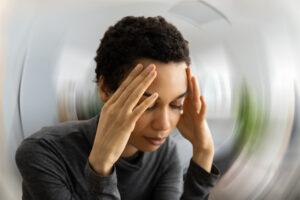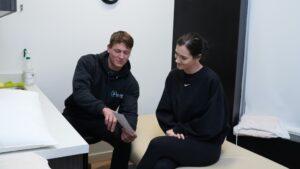
Are you experiencing dizziness or balance issues? Vestibular rehabilitation therapy may be the fix for you. Vestibular therapy can help people cope with the symptoms of conditions such as vertigo and labyrinthitis. At Synergy Rehab, our vestibular therapy specialists focus on exercises that involve head movement, which is essential in stimulating and reprogramming the vestibular system.
Your vestibular system helps you position and move your body so that you feel a sense of balance within your environment. It includes three semicircular canals (head rotation sensors), two otolith organs (gravity sensors) and the vestibular nerve.
Who needs to have this treatment?
Dizziness may be a symptom of certain medical conditions that also affect your sense of balance. Dizziness and balance issues may also cause muscle fatigue and headaches. Vestibular rehabilitation therapy can help people managing conditions including:
- Vertigo
- Ménière’s disease (inner ear disorder)
- Migraine headache
- Labyrinthitis (inflammation of the labyrinth — part of your inner ear)
- Stroke
- Traumatic brain injury
- Falling risk
How does vestibular rehabilitation therapy work?
If you have ever experienced dizziness or imbalance, you probably know that they go hand-in-hand. To understand how vestibular therapy works, it may help to know more about why you feel very dizzy and how your body manages balance.
Dizziness
Dizziness happens when something affects your sense of spatial orientation. Spatial orientation is your brain calculating the position of your body in relation to your surroundings. When that happens, you may feel woozy or lightheaded. You also may feel unsteady, as if you’ve lost your sense of balance.
Balance
Your sense of balance relies on the relationship between your central nervous system (brain) and your sensory system. Your sensory system includes:
- Your vestibular labyrinth in your inner ear: This includes your semicircular canals (loops), which react when you turn your head, and otolith organs that react to gravity and movement.
- Your vision: Your eyes send your brain impulses that show where your body is in relation to other objects.
- Your skin, joints and muscles: When your body moves, it puts pressure on your tissues. Your tissues send signals to your brain, telling it where your body is in relation to space. For example, if you’re standing up and you lean back, you put pressure on tissues in the back of your foot and lower leg. That pressure lets your brain know you’re leaning instead of standing straight.
Your central nervous system pulls this information together so it can tell your body how to maintain balance. When something interferes with the system’s connection, your central nervous system can’t process information correctly. Vestibular rehabilitation therapy helps restore those connections, ultimately reducing your symptoms of dizziness and imbalance.

What happens before I start vestibular rehabilitation therapy?
You need to have your symptoms evaluated. An audiologist can carry out a vestibular test battery, which includes different tests that evaluate how well the vestibular part of your inner ear is working. A physical therapist will then be able to take over to evaluate your balance, your gait (how you walk), your arm and leg strength, and flexibility.
What happens during therapy?
Your physiotherapist will tailor your vestibular rehabilitation to your specific need. They’ll show you how to do specific exercises so you can practice at home, at your convenience. Your therapy may include:
- Eye movement control.
- Balance retraining.
- Stretching and strengthening.
How long is a typical vestibular rehabilitation program?
The length of treatment depends on your situation. Most people have 6-8 weekly sessions. Some people may only need 1-2 sessions. Other people may need several months of ongoing treatment, including doing exercises on their own.
What are the advantages of vestibular rehabilitation therapy?
Studies show vestibular rehabilitation therapy helps:
- Reduce your risk of falling.
- Improve your balance.
- Reduce your dizziness symptoms.
- Improve your ability to stabilize your vision.
- Increase your body strength.
Are there any risks to this therapy?
Vestibular rehabilitation therapy doesn’t pose physical risks. There’s always the chance therapy won’t completely resolve your dizziness or balance issues. This is particularly true if you’re not able to do the prescribed exercises on your own.
Interested in Vestibular therapy near you?
It’s disorienting to feel dizzy and lose your sense of balance, even if those sensations tend to come and go. Persistent dizziness can dramatically affect your quality of life. Vestibular rehabilitation therapy involves exercises that help you regain your sense of balance and manage the discomfort of dizziness. If you’re concerned about dizzy spells or balance issues, talk to your healthcare provider. They’ll evaluate your situation and, if appropriate, refer you to an office like Synergy Rehab that provides vestibular rehabilitation therapy! Contact us today for more information — we’d be happy to answer any questions you have about this treatment.








